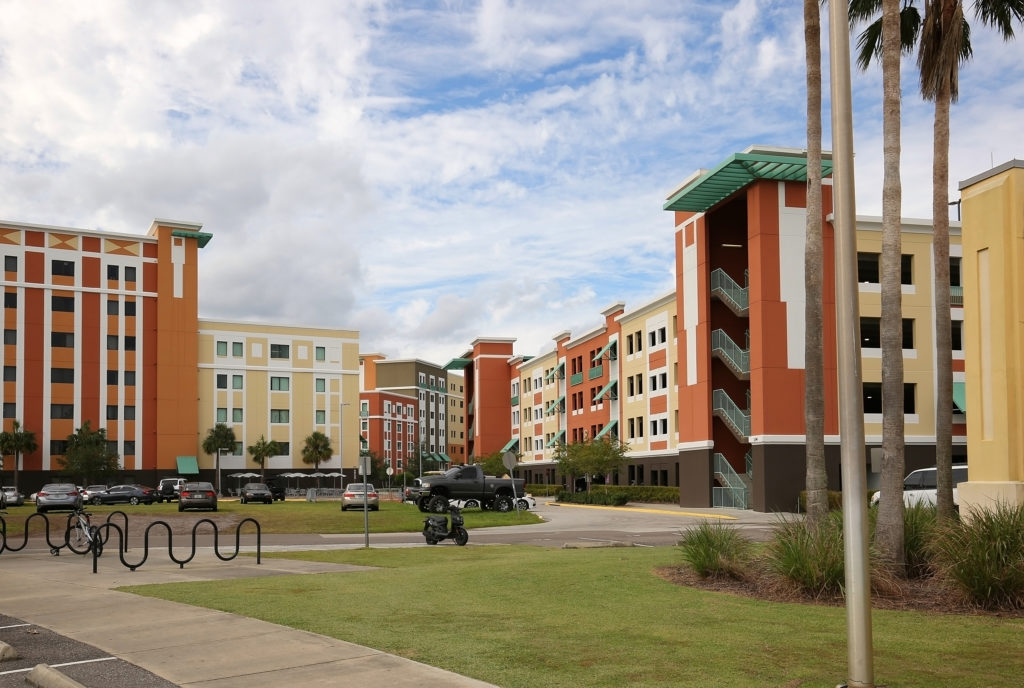Author Archives: NAIDominion
5 Ways Grocery Stores are Innovating for 2019 and Beyond
As the adoption of online food shopping continues to grow, what lies ahead for grocery shopping? Food retail is in need of some change, but how exactly are grocery store chains adapting to this new wave of retail trends? Let’s take a look at five ways grocery stores are innovating for 2019 and beyond.
Grocery Stores Will Offer an Experience
In 2016 and 2017, consumers in America spent more money on food at bars and restaurants than they did at grocery stores. Supermarkets will need to think creatively to combat this. Some stores in smaller cities have transformed their space to combine groceries with entertainment. Kroger has plans to open a store in 2019 in downtown Cincinnati that will include a second-floor bar operated by third parties and ready-to-eat items by vendors.
Grocers Leasing Vacant Mall Space
Recently, Whole Foods opened a store in a former Sears location mall in Florida. As mall operators look to supermarkets to fill their anchor department spaces, ancillary merchants like spice shops, wine stores, and cooking suppliers will take adjacent vacant spaces as they open, to form little food hubs. Since the malls need the foot traffic and the grocers need the large blocks of space, the marriage of the two concepts is a truly innovative solution.
Auto Replacement
Many grocery store companies are feeling pressured by the convenience of fast replenishment services offered by Wal-Mart’s Easy Reorder or Amazon Dash. Because of this, grocers will include auto-replenishment on their online marketplaces. Currently, 47 percent of consumers in the United States said they would take advantage of auto-replenishment for household items like toilet paper and soap according to Accenture Strategy. These same consumers also said they would use auto-replenishment for fresh food items like vegetables.
Kiosk
Traditional supermarket operators will need to compete with Amazon as they continue to enter the grocery format. This is where freestanding grocery kiosks will come into the sphere. They will be installed in office buildings, train stations, and other convenient spots for commuters. This will allow for quick orders that can be picked up on their way home or can be delivered. While more expensive than mobile apps, these kiosks can serve as a way to advertise and alert even the busiest commuter of their immediate needs. A kiosk could also promote various items.
Collaboration
New technology will help grocery stores go on camera and sell products live. By collaborating with major household and food brands, grocers can create sponsored online programming that features cooking, cleaning tips and live entertainment along with cooking segments. Viewers will have the chance to click and order any of the products featured. For example, a guest chef could make a recipe using ingredients that the shopper can then order live and make that evening.
Grocery stores will need to adapt to all of the changes that are happening in the retail sector. These are just a few of the ways grocery stores will innovate for 2019 and beyond.
Henrico nonprofit expands to Hampton Roads
German-style Bier Garden planned in Virginia Beach, with 400 beers and lots of sausage
Recreating the American Mall: 7 Uses for Vacant Mall Space
In certain areas of the country, malls that used to be filled with shoppers are now disappearing and becoming large, vacant pieces of property. Many of these cities have converted these former shopping centers into residences, office space, fitness centers, etc. Let’s discuss seven uses for vacant mall space.
Data Centers
In certain cities such as Baltimore, vacant malls have become prime space for data centers. In the Marley Station Mall in Baltimore, a data center company purchased one wing and has found so much success that they now want to buy out the rest of the mall. Former big box stores in vacant malls in Indiana and Mississippi will also be transitioned to data centers soon. This model has worked well for data center company Rackspace, which has turned two former malls into use as office buildings.
Charter Schools
The amount of space available in vacant malls can be exceptional for charter schools. In Boise, an abandoned mall became a new home for a public charter school. The school had 550 students in kindergarten through tenth grade and plans to grow to over 1,000 students in grades kindergarten through twelfth grade.
Residences
The United States’ first-ever enclosed shopping mall has been transformed into dozens of micro-lofts, many of which are no larger than 225 square feet. The smaller residences in downtown Providence, Rhode Island had a waiting list of 4,000 people, partly because of the affordability since many units start at $550 per month.
Supermarkets
There are very few retailers that need the amount of space that big box stores need. Supermarkets are the exception and in addition to filling empty space, they can increase the amount of foot traffic in a mall.
Hotels
Adding a hotel to a mall can achieve many of the benefits that adding residences does. It may even be more convenient for travelers who need to eat out and take advantage of all the restaurants in the mall. Hotel visitors will also add foot traffic to the mall even if it is just to go grab a bite to eat or escape the hotel room for a bit.
Co-working Space
Vacant mall spaces are prime locations for co-working space because they offer plenty of parking and people utilizing this service can patronize the food court, coffee spots, restaurants, and mall shops in between working hours because it is so convenient.
Nonprofits
A short-term space is ideal for a non-profit and a great solution for malls that are struggling to keep retailers to avoid looking empty. By letting a local animal shelter set up a pop-up shop where people can adopt cats and dogs, the mall owners get to fill a vacant space with something that will attract people and other tenants won’t consider it competition.
There are plenty of different options to fill up vacant mall space. Whether it be to transform it into a data center or add in residences, the options are endless for this type of large space.
Chesapeake’s Greenbrier area may be getting the city’s second brewery
4 Things to Watch in the Student Housing Market for 2019
According to Bisnow, student housing saw $10 billion in transaction volume last year. While the student housing sector saw immense growth, there are still issues with obtaining affordable housing opportunities for students both on and off college campuses. Here are four things to watch in the student housing market for 2019.
Continued Growth in the Market
Student housing was once a niche of the commercial real estate industry, but now it has become its own sector completely and has experienced strong investment growth over the years due to a substantial increase in both foreign and domestic student enrollment. Student housing differs from the multifamily industry in that it charges by the bed or room rather than a single unit. Foreign investors made up a fifth of the total transactions in the student housing sector last year and we expect to see this number rise.
Student Housing Costs Rising
The cost of student housing will rise as land acquisition, construction materials, labor, local entitlements, and federal and state regulation are priced at all-time highs. Student housing buildings are commanding these top-tier prices because there is such a high demand for these investment types. Since there are few affordable housing programs and tax credits developers can use to offset the cost of these projects, this also boosts the price of building student housing developments. The programs that developers can use often entail cumbersome and time-consuming experiences that often delay a project.
Increased Emphasis on Amenities
Student housing used to be linked to thoughts of cramped dorms in tight buildings with bare walls and barely any outdoor space, but these days are long gone. Now student housing properties are going full force with amenities such as:
- Elaborate Fitness Facilities – We expect to see more student housing developments with fitness facilities that go beyond a traditional gym and become a place to socialize as well.
- Rooftop Amenities – These include social lounges, coffee bars, grilling areas, and other spaces that encourage community interaction.
- Outdoor Dining & Kitchen Areas – Today’s students want space to cook their own meals with neighbors and friends, so developers will offer large patio areas as additional dining spots or extended seating from a bistro or cafe to an outdoor space.
- Recreation Sports – These include tavern-style game rooms, air hockey, darts, video games stations, volleyball courts, basketball courts, and some have resort style pools and on-site golf simulators.
More Student Housing Properties Changing Hands
With an increased interest in student housing properties by investors, both foreign and domestic, we expect to see more of these student housing properties being snatched off the market. Forbes reported that in 2016, student housing transaction volume totaled more than $9 billion, a 62 percent increase from 2015.
That incredible growth has attracted many of the new players that have entered the space today. The increased demand for student housing properties compressed cap rates and created the competition for this formerly niche industry, making it an attractive investment that is still growing in attraction.









